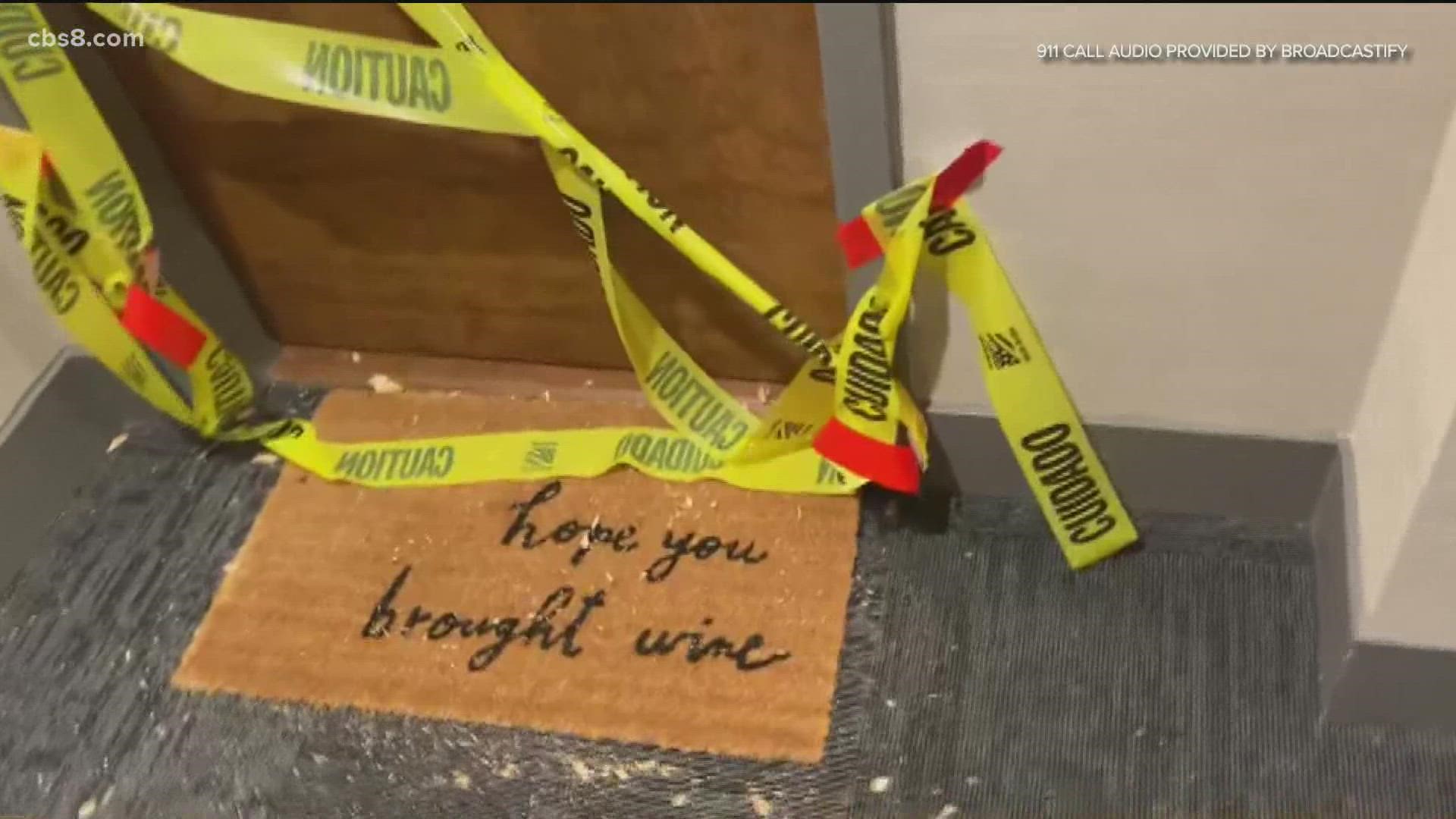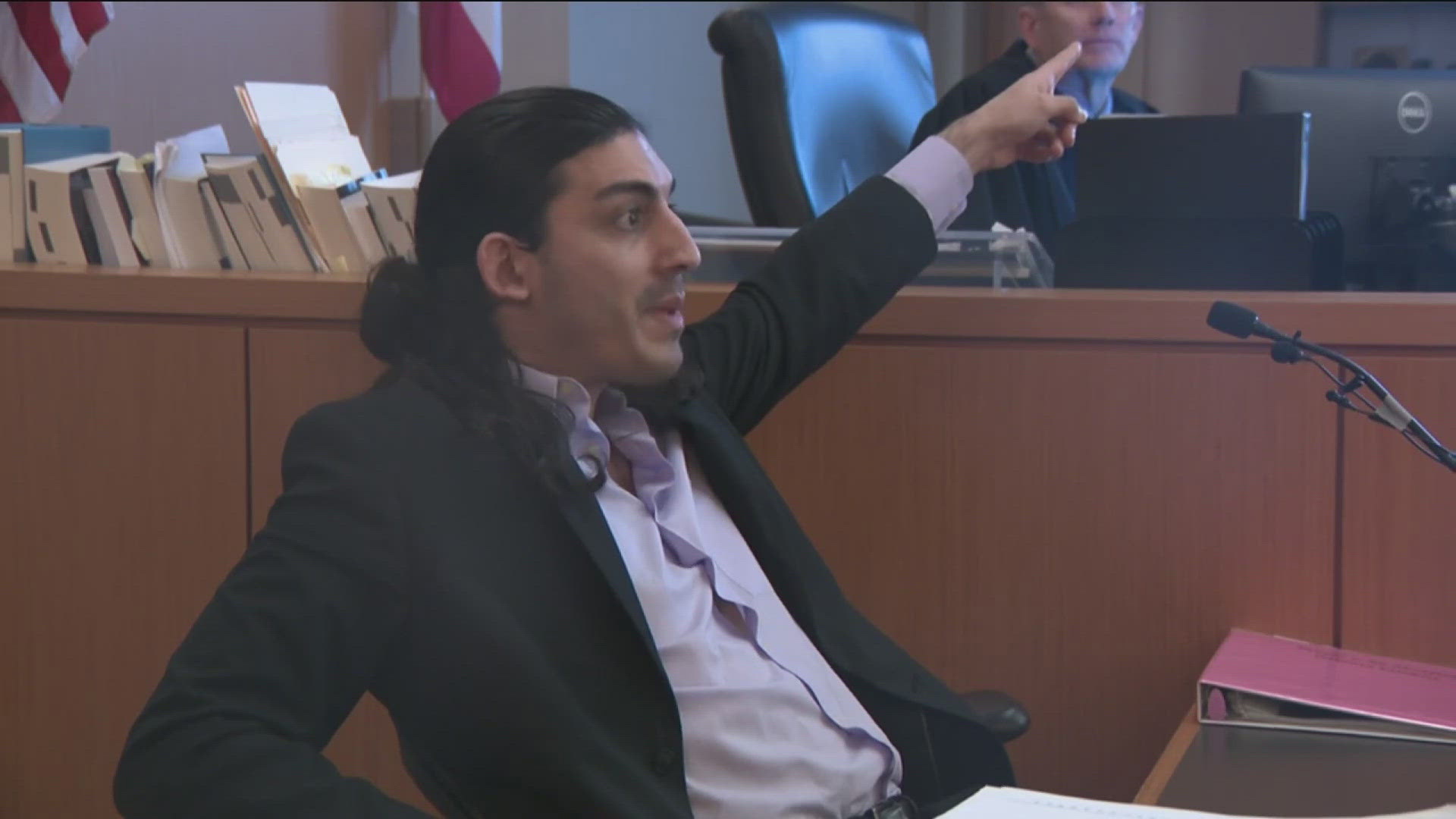The story of Ali Abulaban, a figure known to many from social media, truly became a subject of widespread public discussion when serious charges were brought against him. It's a situation that, in a way, pulled back the curtain on the often-private lives of those who share so much of themselves online. This particular case, with its very public elements and the sheer tragedy involved, has quite naturally drawn a lot of attention, making people wonder about every single detail that comes to light.
When something so shocking happens, especially involving someone who was, you know, a recognizable face, there's always a considerable amount of curiosity. People tend to look for answers, trying to piece together how such events could possibly unfold. The legal process, as a matter of fact, begins to lay out what happened, and part of that involves presenting different kinds of proof, which can include things like visual records from the location where the events occurred.
These kinds of visual records, sometimes called "crime scene photos," often become a focal point of discussion, even if they aren't directly seen by the general public. Their very existence, you know, sort of hints at the gravity of the situation and the detailed work that goes into an investigation. It really is a powerful reminder of the human stories behind the headlines, and the often-difficult questions that arise when personal lives become public matters.
Table of Contents
- Ali Abulaban - A Public Figure's Story
- What Happened in the Ali Abulaban Case?
- Why Do Crime Scene Photos Capture Public Attention?
- How Are Ali Abulaban Crime Scene Photos Handled in Court?
- Are Ali Abulaban Crime Scene Photos Released to the Public?
Ali Abulaban - A Public Figure's Story
Before the very serious legal proceedings, Ali Abulaban was, you know, pretty well-known to a lot of people, particularly those who spent time on various social media platforms. He had built up a considerable following, sharing parts of his life and personality with a wide audience. This public persona, often filled with humor and everyday observations, really shaped how many perceived him, making the later events all the more surprising and, for many, quite unsettling.
His content often gave viewers a glimpse into his family life, which, in a way, made his followers feel like they knew him, or at least a version of him. This connection, however superficial it might be, meant that when news broke about the charges, it wasn't just another distant news story for many. It was, arguably, a story about someone they had, in some respects, invited into their daily scrolling, which added a distinct layer of complexity to the public's reaction.
Personal Details and Public Life
Ali Abulaban's life, prior to the events that led to his legal troubles, was, like your, pretty much centered around his online presence. He spent a lot of time creating content that resonated with a specific audience, building a community around his digital identity. This public-facing aspect of his existence is, you know, a key part of how he was known to the broader world, and it plays a role in how the public has reacted to the developments in his case.
| Detail | Information (Publicly Available) |
|---|---|
| Name | Ali Abulaban (also known as JinnKid online) |
| Public Role | Social media content creator, comedian, impressionist |
| Known For | Short comedic videos, impressions, sketches |
| Family Status | Married with a child (at the time of the events) |
| Location (at time of events) | San Diego, California area |
The table above offers a quick look at some of the publicly available details about Ali Abulaban, the kind of information that was generally known about him before the legal issues came to light. It's just a little bit of background to help paint a picture of the person involved in such a widely discussed case, allowing for a better grasp of the context surrounding the public's interest.
What Happened in the Ali Abulaban Case?
The Ali Abulaban case, quite frankly, involves some incredibly serious accusations that truly shook those who had followed his online activities. It centers on charges related to the deaths of his wife and another individual. These events, which took place in October 2021, quickly became a focal point for news outlets and, you know, for general public discussion, given the circumstances and the social media connection.
The legal proceedings have, as a matter of fact, brought forth many details, painting a picture of domestic difficulties that reportedly escalated to a tragic degree. It's a situation that has, quite naturally, led to a lot of questions about the dynamics of relationships and the pressures that can sometimes build up behind closed doors, even for those who appear to share so much of their lives publicly. The accusations themselves point to a very grave outcome from what was, apparently, a deeply troubled personal situation.
The Events Surrounding the Ali Abulaban Crime Scene
The location where the alleged events took place, often referred to as the "crime scene" in legal discussions, is, of course, a central piece of the investigation. Law enforcement agencies, you know, typically spend a great deal of effort gathering every bit of information and every item of record from such a place. This work is absolutely crucial for building a full picture of what happened, allowing investigators to piece together the sequence of events and gather tangible proof.
Investigators, basically, collect all sorts of things from these locations: physical items, witness statements, and, yes, visual records like photographs. These photographs, in the case of the Ali Abulaban crime scene, would have been taken to document the condition of the area, the placement of items, and any other details that could, in some respects, shed light on the circumstances. It's a painstaking process, really, designed to capture as much information as possible before anything is moved or altered.
Why Do Crime Scene Photos Capture Public Attention?
It's a curious thing, but visual evidence, especially "crime scene photos," often holds a very particular kind of pull for the public. There's something about images that, you know, seems to offer a more direct, unfiltered glimpse into the stark reality of a situation. Unlike written reports or spoken testimony, a photograph can, in a way, feel like an unvarnished truth, even though its interpretation can still be quite complex and, arguably, subjective.
This fascination isn't just about morbid curiosity; it's also about a deep-seated human desire to understand, to witness, and to grasp the full weight of events that are often beyond our everyday experience. When a case involves a public figure, like Ali Abulaban, that interest is, naturally, amplified. People want to connect the dots, and visual proof, even if only discussed and not seen, seems to promise a clearer picture, a more complete narrative of what truly occurred.
The Impact of Ali Abulaban Crime Scene Photos on Public Discourse
Even without being widely circulated, the mere mention of "Ali Abulaban crime scene photos" can significantly shape how the public talks about the case. The idea that such detailed visual records exist can, in a way, lend a certain gravity to the proceedings, making the events feel more tangible and, perhaps, more real to those following along from a distance. It's almost like these unseen images carry a weight that influences the entire discussion, even if no one outside the court has seen them.
This impact stems from the public's general awareness that these visual records are powerful pieces of proof. They are, you know, the kind of things that can speak volumes in a courtroom, helping to establish facts and corroborate testimony. So, while the public might not see them, the knowledge of their existence contributes to the seriousness with which the case is viewed, and it shapes the general narrative that unfolds in the media and in casual conversations, pretty much guiding how people perceive the gravity of the situation.
How Are Ali Abulaban Crime Scene Photos Handled in Court?
When it comes to legal proceedings, particularly in serious cases like the one involving Ali Abulaban, the handling of items of record, including "crime scene photos," follows a very strict set of rules. These guidelines are, in fact, put in place to make sure that any piece of proof presented to a jury or a judge is authentic, reliable, and has not been tampered with. It's a system designed to maintain the integrity of the legal process, ensuring fairness and accuracy.
Prosecutors and defense attorneys, you know, both have a role in reviewing these visual records. They examine them closely to understand what they show, how they might support or challenge a particular argument, and whether they meet all the legal requirements for admission. This process can be quite detailed, involving discussions about the chain of custody – basically, who had possession of the photos at every step – and whether they were taken and stored properly. So, it's a very careful dance, making sure everything is just right before it's used as part of the formal proceedings.
During a trial, if these visual records are deemed acceptable, they are presented in a controlled environment. They are not, typically, just shown to anyone; rather, they are displayed for the jury, the judge, and the legal teams involved. The purpose is to help those making decisions understand the layout of the location, the positions of different elements, and any other visual information that might be pertinent to the arguments being made. It's about providing a clear, visual context for the spoken testimony and other forms of proof, making sure everyone involved in the decision-making process has a consistent understanding of the physical setting.
Are Ali Abulaban Crime Scene Photos Released to the Public?
A question that often comes up in high-profile cases, especially when there's public interest in "crime scene photos," is whether these sensitive visual records will ever be made available for general viewing. The answer, you know, is almost always no, at least not in their raw, unfiltered form. There are, in fact, very strong reasons why such materials are kept from widespread public release, even when a case is a subject of intense curiosity.
Courts and law enforcement agencies have a responsibility to protect the privacy of victims and their families, and to prevent the sensationalization of tragic events. Releasing graphic visual records could cause additional distress to those affected and, frankly, serve little legitimate public purpose beyond satisfying curiosity. Moreover, there are concerns about the potential for such images to be misused or exploited outside the controlled environment of a courtroom, which is why, essentially, they are kept under wraps.
While the details and facts of a case, including what these visual records might depict, are discussed in open court, the actual images themselves are usually not distributed to the media or the general public. News organizations might describe what was presented or discussed in court, but they typically do not publish the sensitive visual records. This approach aims to strike a balance between public transparency regarding the legal process and, you know, protecting the dignity and privacy of those involved in incredibly difficult circumstances. It's a pretty standard practice, ensuring that the legal system can function without causing unnecessary harm or disrespect.
This discussion about the Ali Abulaban case and the concept of "crime scene photos" really highlights the complex interplay between public interest, legal procedures, and ethical considerations. We've talked about Ali Abulaban's public background, the very serious nature of the charges, and how visual proof is typically handled within the justice system. The public's natural curiosity about such events is real, but so too is the need to manage sensitive information with care and respect, especially when it involves such personal and tragic circumstances. The legal process, in a way, seeks to uncover truth while also navigating these very human aspects of a difficult situation.


